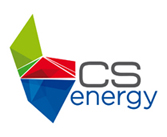FAQ
FAQ - CS Energy
What is green ammonia and what role does it play in Queensland’s energy transformation?
May 19, 2023
No Comments
Ammonia is a type of gas that is widely used in fertiliser and chemical industries. The storage and transport of ammonia is a mature industry ...
Read More →
What is energy storage?
August 12, 2022
No Comments
Put simply, energy storage is the ability to capture energy at one time of the day for use at a later time. Storage devices can ...
Read More →
What is the TSBE hydrogen portal?
February 22, 2022
No Comments
An online portal has been established for Toowoomba and Western Downs businesses so they can register for opportunities in the emerging green hydrogen supply chain. ...
Read More →
How is the energy market changing?
February 4, 2022
1 Comment
The Australian energy mix is changing rapidly. Three key factors are driving this significant change – renewable generation, technology innovation, and a rise in the ...
Read More →
What’s the difference between AC and DC electric vehicle chargers?
December 10, 2021
No Comments
As part of our retail offerings for large energy users, CS Energy has partnered with industry leaders Jet Charge and EVSE to offer a suite ...
Read More →
What is CS Energy’s Kogan Renewable Hydrogen Project?
October 20, 2021
No Comments
Answer: It is a renewable hydrogen demonstration plant that will be constructed next to CS Energy’s Kogan Creek Power Station near Chinchilla. The hydrogen plant ...
Read More →
How far can you really go in an electric vehicle?
May 20, 2021
No Comments
Answer: This year, CS Energy has installed 7kW and 22kW AC chargers at prime inner-city locations so Queensland Government fleet drivers can ‘top up’ their electric vehicles ...
Read More →
Who is bearing the cost of this class action?
April 20, 2021
No Comments
Answer: CS Energy is a Queensland Government-owned business, so Queenslanders are already bearing the costs of defending against what will be a long and complex ...
Read More →
Who benefits from litigation-funded class actions?
April 20, 2021
No Comments
Answer: The Australian Law Reform Commission reported that the median return to class action members was 51% of the settlement award when corporate backers were ...
Read More →




